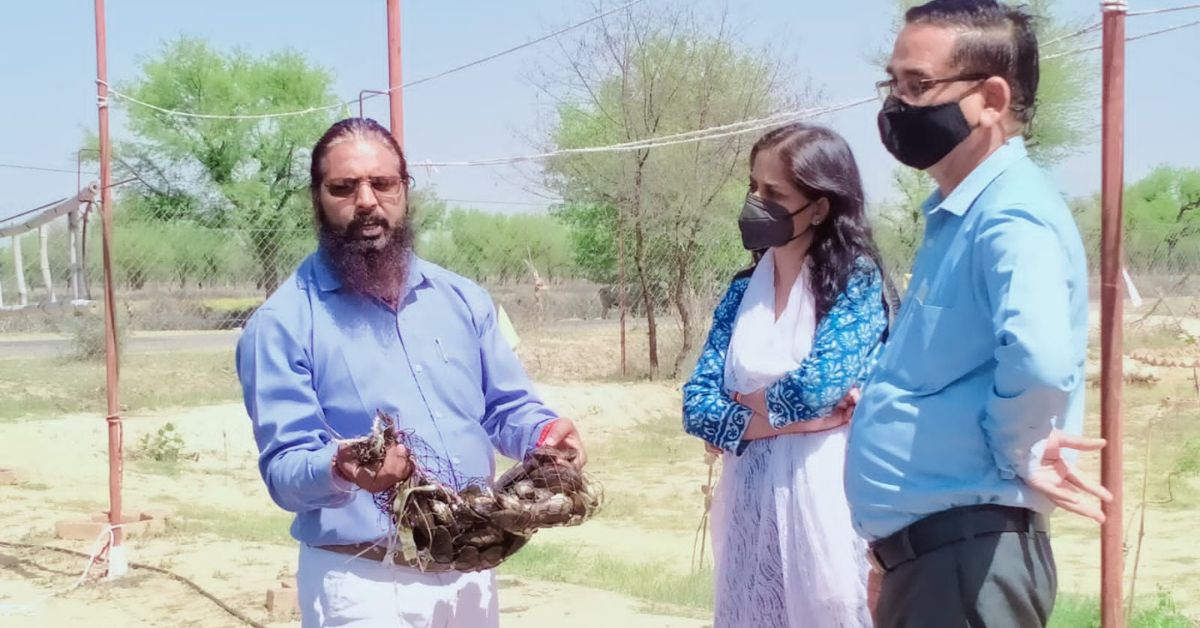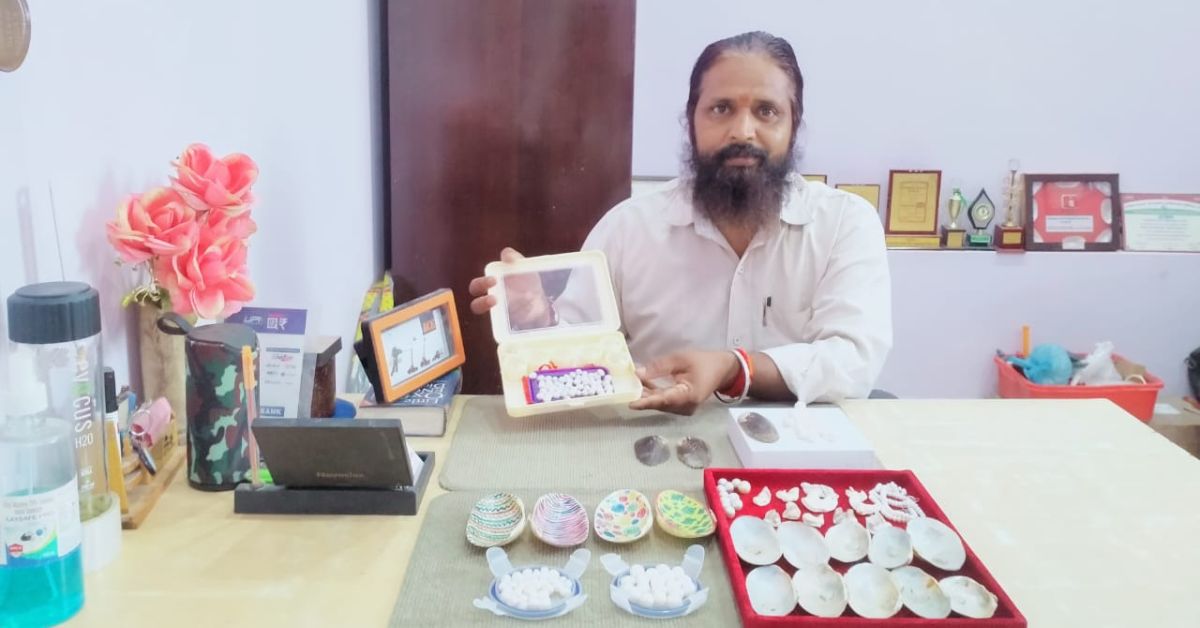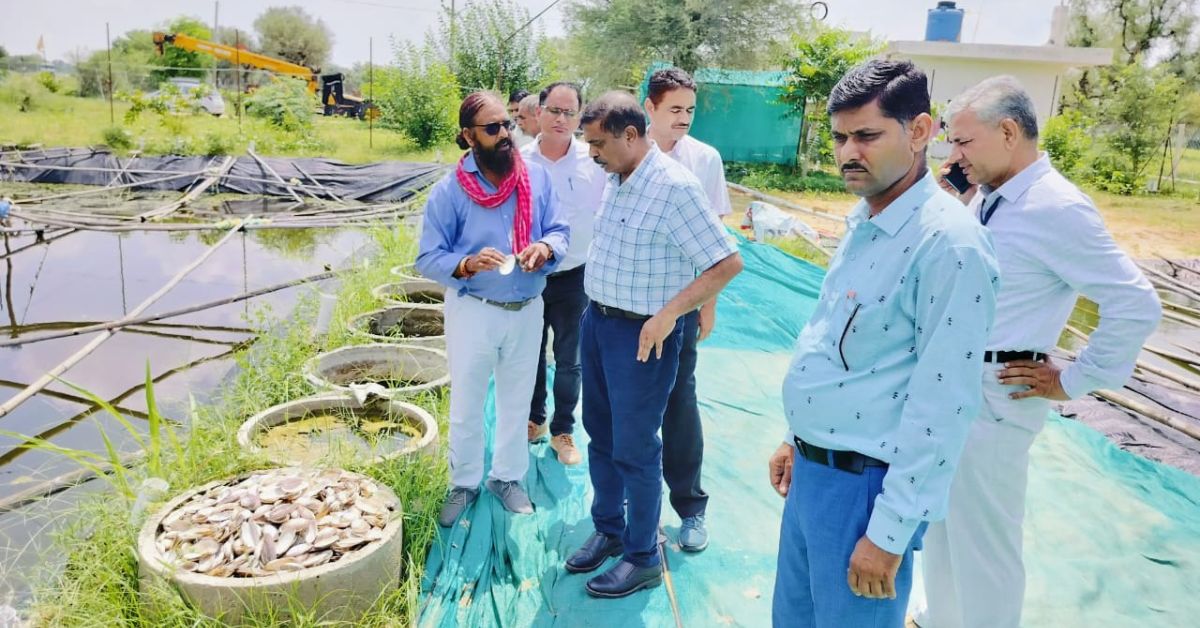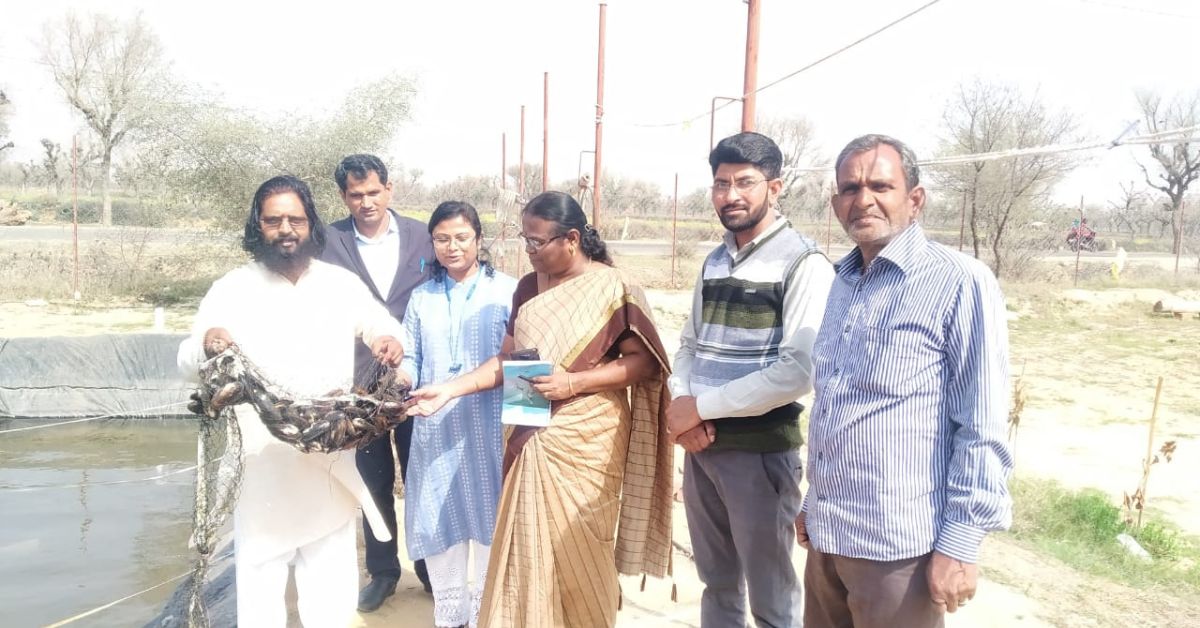With a short spell of monsoon coupled with scanty rainfall, Rajasthan is considered the most water-deficient state in the country. Unhindered by water issues of the dry region, Vinod Bharti turned to oyster pearl farming, arguably the most lucrative aquaculture business in the country.
For him, pearl farming has emerged as a potential economically viable opportunity at a time when he had lost all ways of earning a livelihood.
Starting with an initial investment of Rs 45,000, the former teacher now generates an income of Rs 20 lakh per batch with pearl farming. Today, he has established a market base not only in India but also internationally in the UAE and Thailand.
Among a handful of farmers who turned to oyster pearl farming in Rajasthan, this move earned him widespread recognition from people, including Vasundhara Raje and Ashok Gehlot. The Better India sat down with him to learn how he reaped huge profits with the novel farming technique.

The first failure
After his graduation in the arts field, Vinod pursued a diploma in computer science in 1999. Thereafter, he started working as a computer tutor in an institute and eventually opened his own academy.
“Back then, the computer was very new to people and they were interested in learning the new device. I would get students across all age groups. However, I was forced to shut down the institute after five years as I was not getting many students at the village level,” says Vinod.
Without any sustainable work, he would do odd jobs to earn a living. It was only in 2017 that he understood what he was meant to do. “By that time, I was looking for ways where I could start a business with less capital and space. One day, one of my friends suggested I try my hands at oyster pearl farming,” he shares.
“I did not want to get into traditional farming as I had seen my family do that only for chaumasa (four months of monsoon) and then switching to survive on daily wage jobs,” he adds.

To get a clear understanding of oyster pearl farming, Vinod went to Odisha – about 1,700 km from his village in Sikar district. After undertaking training from ICAR-Central Institute of Freshwater Aquaculture (CIFA), he returned to his village with 500 oysters and high hopes.
Vinod dug a 10×5 ft pond inside his home and released all the oysters in it. Sadly, he lost 453 oysters within a month.
“I failed miserably. I overlooked the fact that we have a very different and hot environment here in Rajasthan. Even our water quality is different from the coastal state of Odisha. I also made a few mistakes in preparing the pond, and also while giving supplements, checking the pH and ammonia levels, and performing surgeries to extract pearls from the oysters,” he adds.
Earning thrice the inputs

Vinod rectified these mistakes in the second batch. He bought another 1,000 oysters and released them in the pond.
“This time, I regularly checked the pH and the temperature in the pond. Ideally, the pH should be 7.5 [basic] and the temperature should be maintained between 25 and 30 degrees. During summer, the temperature shoots to 50 degrees in our region. To maintain an ideal temperature, I installed a green shade and kept rotating water for 3-4 hours in a day,” he explains.
As he had hoped, the success rate this time was 70 percent. “With this, I made a profit of Rs 50,000 and recovered the investment amounts,” he smiles.
Over the years, Vinod used the profits to expand pearl farming in four ponds spread over an area of two bigha [1.25 acre]. In the last batch, he managed to extract 10,000 pearls. Priced at Rs 500 each pearl, he earned an income of Rs 20 lakh, which was thrice the investment amount.

“This success didn’t come easy. At a time when I had failed miserably, my family doubted my capabilities and I had to face negative comments as I had forcefully established a pond inside our home and exhausted a huge sum. But this did not prove to be a setback. I focused on using this failure as my motivation and to prove myself,” he says.
“Eventually, many officers from the agriculture department and universities started visiting my farm and I was being called at agritech fairs across the state. I have received recognition from former chief ministers and an appreciation letter from Prime Minister Narendra Modi. This has given me immense motivation to continue the work at this age. I am glad that I have managed to earn an identity by doing something unique sitting in my village,” adds the 45-year-old.
Vinod informs that he wishes to establish a training institute for farmers interested in learning pearl farming. “But I will be able to do so only when I get the government’s authorisation. A farmer needs loans when starting something new. For this, they need to show certification. I lack that authority. Not everyone can go to Odisha to learn pearl farming. I request the state government to help me in this regard as I myself have seen unemployment days and I wish that I provide job opportunities to the unemployed with this work,” he adds.
(Edited by Padmashree Pande; All photos: Vinod Bharti)
No comments:
Post a Comment